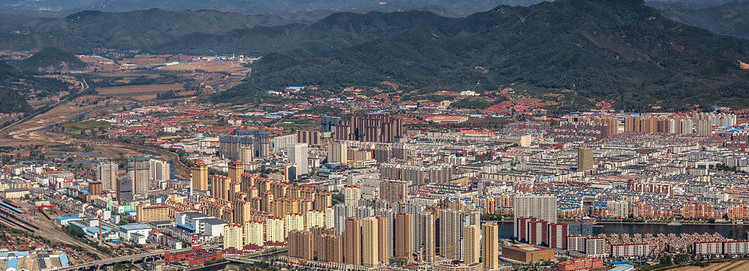
Transportation Policymaking in Chinese Cities
Working Papers
Zheng, Y., J. Moody, S. Wang, and J. Zhao. Measuring policy leakage of Beijing's car ownership restriction. [under review]
Publications
Wang, S., J. Moody, and J. Zhao. (2020). What prompts the adoption of car restriction policies among Chinese cities. International Journal of Sustainable Transportation. https://doi.org/10.1080/15568318.2020.1770905
Facing rapid motorization, many Chinese municipalities are implementing policies that restrict car ownership or use. However, there is significant variation in terms of which cities adopt these policies and when. This research systematically investigates what factors prompt local governments in China to adopt these car restriction policies. We collect a database of car restriction policies as well as economic, demographic, land use, and transportation indicators for 287 Chinese municipalities from 2001 to 2014. We adopt a mixed methods approach that combines a qualitative investigation of stated objectives and legislative precedent within policy documents with a quantitative duration model of policy adoption. We find that the adoption of comprehensive car ownership and use restriction policies across Chinese cities primarily responds to local air pollution and secondarily to car ownership and congestion. Policy adoption additionally responds to local subway line constructions. Local economic power and population size do not effectively explain policy adoption. Idiosyncratic effects at provincial or city levels are important, although the underlying mechanisms by which these network effects manifest remain unclear. Broadly, our findings suggest that problem solving and network effects both contribute to the adoption of car restriction policies across China's cities and that the legal policy documents reliably illustrate the motivations of these policies.
Moody, J., S. Wang, J.W. Chun, X. Ni, and J. Zhao. (2019). Transportation policy profiles of Chinese city clusters: A mixed methods approach. Transportation Research Interdisciplinary Perspectives, 2. https://doi.org/10.1016/j.trip.2019.100053
Chinese cities have experienced diverse urbanization and motorization trends that present distinct challenges for municipal transportation policymaking. However, there is no systematic understanding of the unique motorization and urbanization trends of Chinese cities and how physical characteristics map to their transportation policy priorities. We adopt a mixed-method approach to address this knowledge gap. We conduct a time-series clustering of 287 Chinese cities using eight indicators of urbanization and motorization from 2001-2014, identifying four distinct city clusters. We compile a policy matrix of 21 policy types from 44 representative cities and conduct a qualitative comparison of transportation policies across the four city clusters. We find clear patterns among policies adopted within city clusters and differences across clusters. Wealthy megacities (Cluster #1) are leveraging their existing urban rail with multimodal integration and transit-oriented development, while more car-oriented wealthy cities (Cluster #2) are building urban rail and discounting public transport. Sprawling, medium-wealth cities (Cluster #3) are opting for electric buses and the poorest, dense cities with low mobility levels (Cluster #4) have policies focused on road-building to connect urban cores to rural areas. Transportation policies among Chinese cities are at least partially reflective of urbanization and motorization trends and policy learning needs to account for these distinct patterns in both physical conditions and policy priorities. Our mixed-method approach (involving time-series clustering and qualitative policy profiling) provides a way for government officials to identify peer cities as role models or collaborators in forming more targeted, context-specific, and visionary transportation policies.
- Feature in MIT Energy Initiative's Energy Futures Magazine
- Guest contribution to GIZ Sustainable Transportation forum
Chun, J.W., J. Moody, and J. Zhao. (2019). Transportation policymaking in Beijing and Shanghai: contributors, obstacles and process. Case Studies on Transport Policy, 7(4): 718-731. https://doi.org/10.1016/j.cstp.2019.09.003
With continued motorization and urbanization in Chinese cities, there is a growing demand for innovative transportation policies at the city level to address the challenges of congestion, local air pollution, and greenhouse gas emissions. Using Beijing and Shanghai as case studies, this paper draws on 32 in-depth semi-structured interviews with municipal government officials, academics, and transportation professionals to explore the city-level transportation policymaking process in Chinese megacities. Across the two cities, we identify three common contributors—policy learning, data informatization, and public opinion—and four obstacles—public complaint, unilateral decision-making, inadequate coordination among relevant departments, and lack of adaptiveness in policy implementation practice—to adopting timely and appropriate transportation policies. We then introduce a processual model that connects the contributors and obstacles identified within the flow of transportation policy among key actors in city-level government. This process shows how transportation policymaking in Chinese megacities is often reactive to public outcry over a transportation problem. This problem is investigated by a technical government research center that reports to the municipal transport committee. This committee then assesses public opinion and submits a policy recommendation to city government leadership, who make the final policy decision. Based on both case studies, we discuss potential recommendations for how to better enable transportation policymaking at the city level in China through more formalized processes of policy experimentation and public participation. We conclude with a discussion of limitations and areas of future research.
Image source: Blake Thornberry/Flikr (CC BY-NC-ND 2.0)